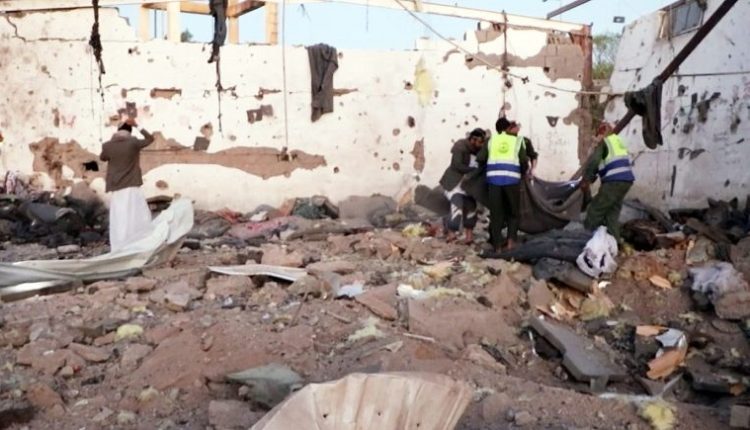America in the Dock: Amnesty International Calls for Investigation into Massacre of African Migrants in Saada
In one of the most gruesome crimes of American aggression since its direct involvement in the war on Yemen, Amnesty International has renewed its call to open an urgent, independent investigation into U.S. airstrikes that hit a shelter for African migrants in Saada governorate, killing more than sixty Ethiopian migrants last April.
The crime—carried out in cold blood—brought America’s dark record in Yemen back into the spotlight and exposed the hypocrisy of its claims to “defend human rights,” confirming that Washington continues to play its old role as a killing, hegemonic power that does not hesitate to crush civilians to serve its regional agendas.
An American strike against innocent people in a shelter
The crime occurred in the early hours of dawn when U.S. aircraft launched two consecutive strikes on a facility used to shelter African migrants north of Saada. The first strike destroyed the main building completely, and the second followed, targeting medics and survivors who were attempting to rescue those trapped under the rubble, raising the death toll to more than 60 with dozens wounded.
According to survivor testimonies collected by the organization, all victims were civilians with no connection to any military or political activity—Ethiopian migrants en route to Saudi Arabia seeking work to escape poverty and famine in their countries.
This fact alone is enough to make the U.S. strike a fully constituted crime under international humanitarian law, particularly since the facility was known to UN agencies as a shelter for refugees and had no military use.
Precision U.S. bombs used for deliberate killing
Amnesty International revealed that fragments of bombs collected from the strike site were identified as GBU-39 precision-guided munitions—types of weapons used by the U.S. military in its special operations.
These bombs are supposed to reduce “collateral damage,” but their use against a civilian shelter proves the attack was not a random mistake; rather, it was a deliberate, planned targeting as part of a series of aggressive operations carried out by Washington in Saada in recent months.
Observers say the choice of this weapon type reflects a deliberate intent to hit a specific target, meaning the Americans either knew the nature of the site very well or at least received deliberately falsified coordinates from their field assets to justify an unjustifiable aggression.
Washington silent… the world demands accountability
Despite months having passed since the crime, U.S. Central Command (CENTCOM) has offered no official explanation for why the migrant center was targeted, even as international calls grow for an independent, impartial investigation.
Amnesty described the attack as “a clear suspicion of a war crime” and an “indiscriminate attack” amounting to a grave breach of the Geneva Conventions, calling for those responsible in the U.S. to be held accountable, for compensation to be paid to victims’ families, and for immediate protection to be provided to other migrants in border areas.
Meanwhile, American and Western media attempt to veil or justify the incident as “action against hostile targets,” despite all field evidence and eyewitness accounts confirming that the site was purely a civilian shelter for the poor and migrants.
American aggression in the context of backing Zionist attacks
The bloody strike in Saada coincided with escalated U.S.-Zionist aggression on Gaza and the beginning of a maritime escalation in the Red Sea, revealing a close link between this crime and Washington’s attempts to pressure Sanaa to halt its support for the Palestinian people and to prevent ships linked to the Zionist entity from transiting Bab al-Mandeb.
In this sense, the Saada crime was not isolated but part of a broader U.S. offensive aiming to punish Yemen for its anti-hegemonic stance and for its practical support of the Palestinian resistance.
Field reports indicate that U.S. aircraft carried out, during the same period, a series of strikes on border areas in Saada and Hajja, hitting civilian roads and inhabited farms under the pretext of “striking Ansar Allah positions,” strengthening the hypothesis that Washington is entering a new phase of proxy warfare in Yemen on behalf of the Zionist entity.
Saada: a memory weighted by American-Saudi aggression
Saada, which has endured hundreds of strikes since the start of the aggression in March 2015, now faces the direct American face of the offensive after years in which the U.S. largely managed the war from behind the scenes through a joint operations room in Riyadh.
But the latest strike shows that America no longer confines itself to logistical and intelligence support; it h

